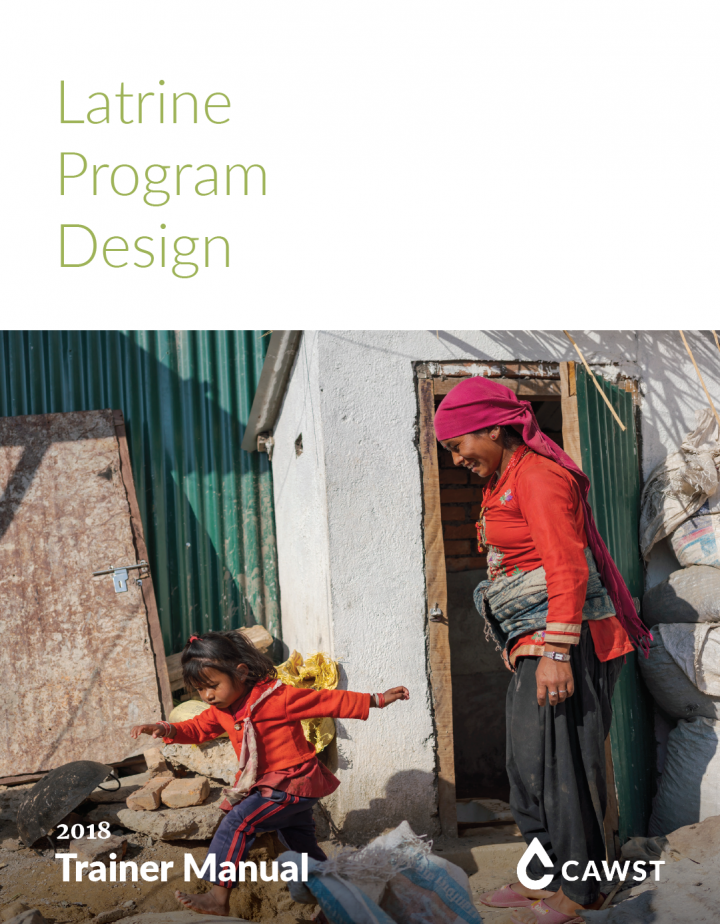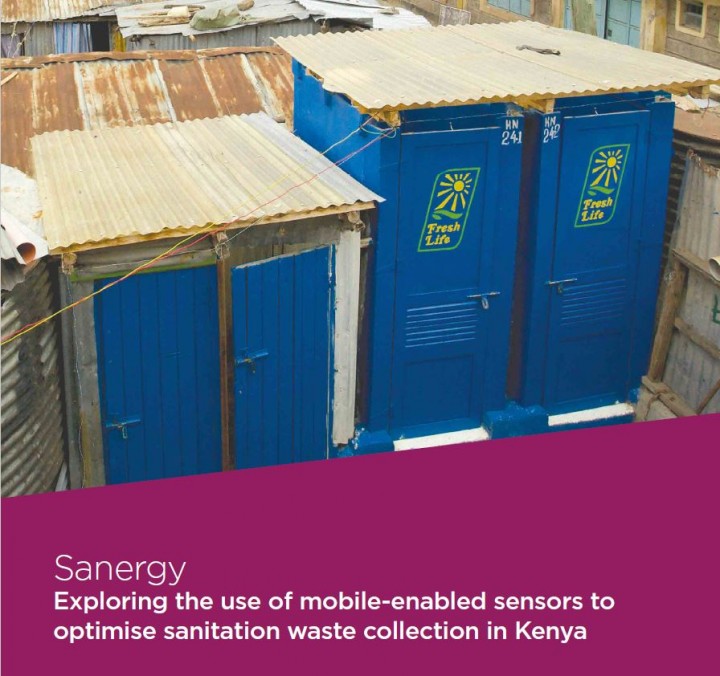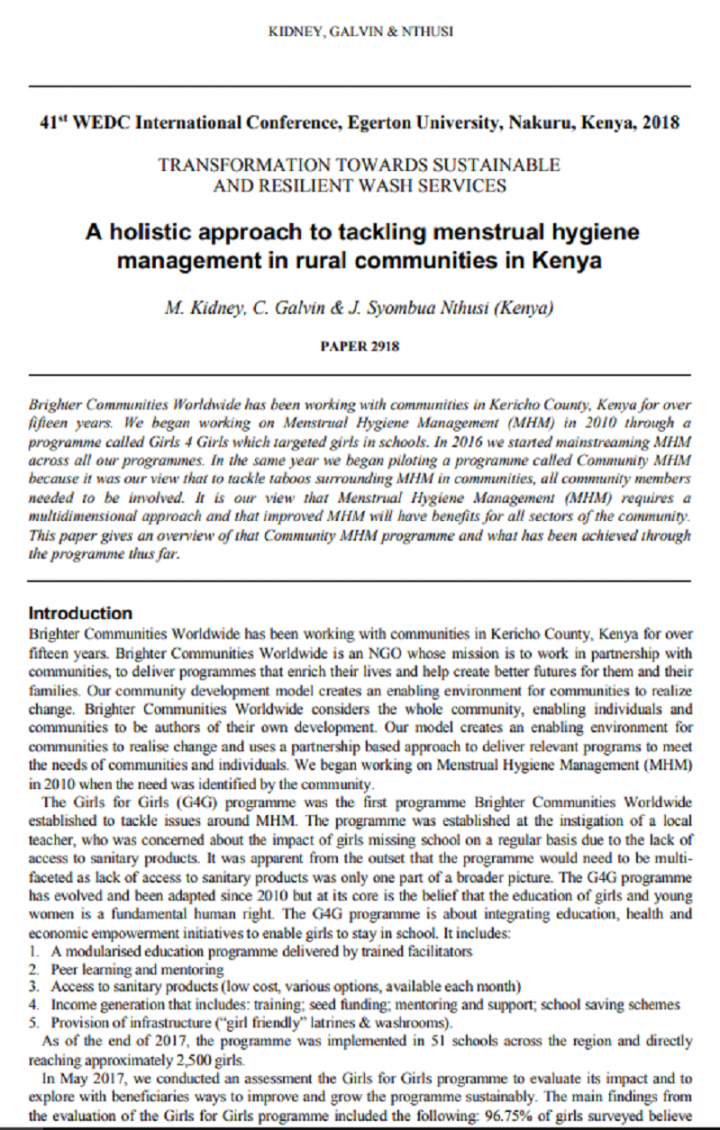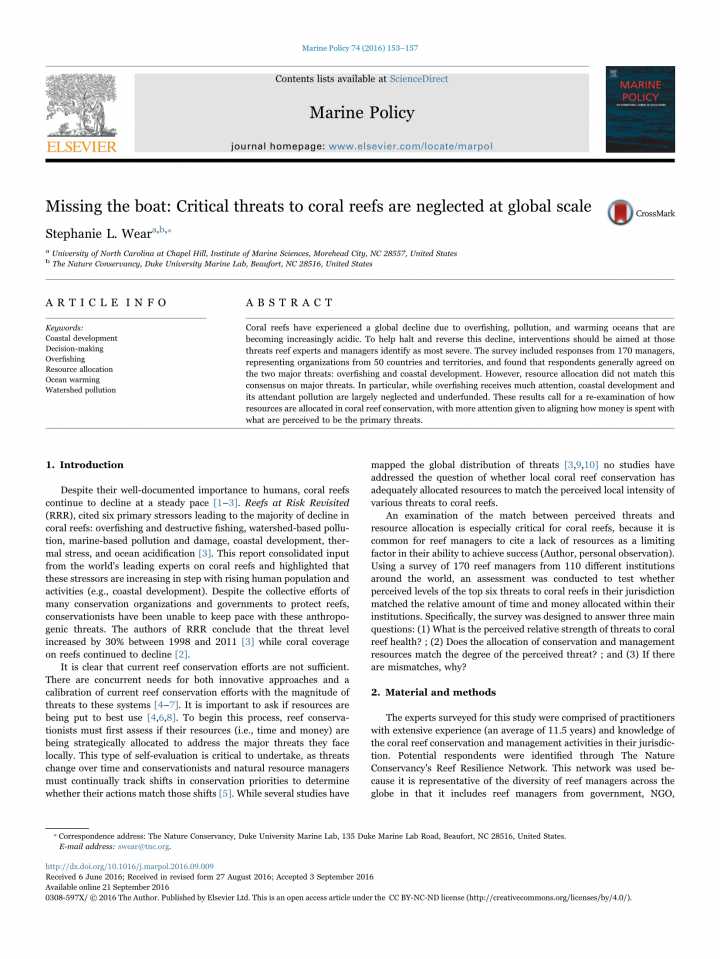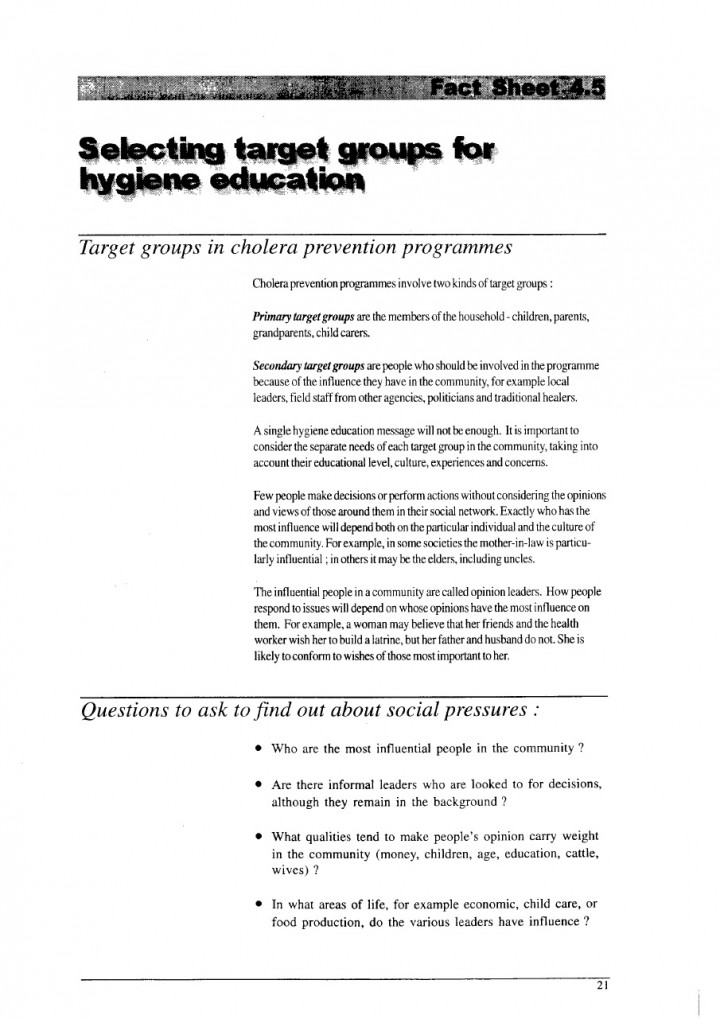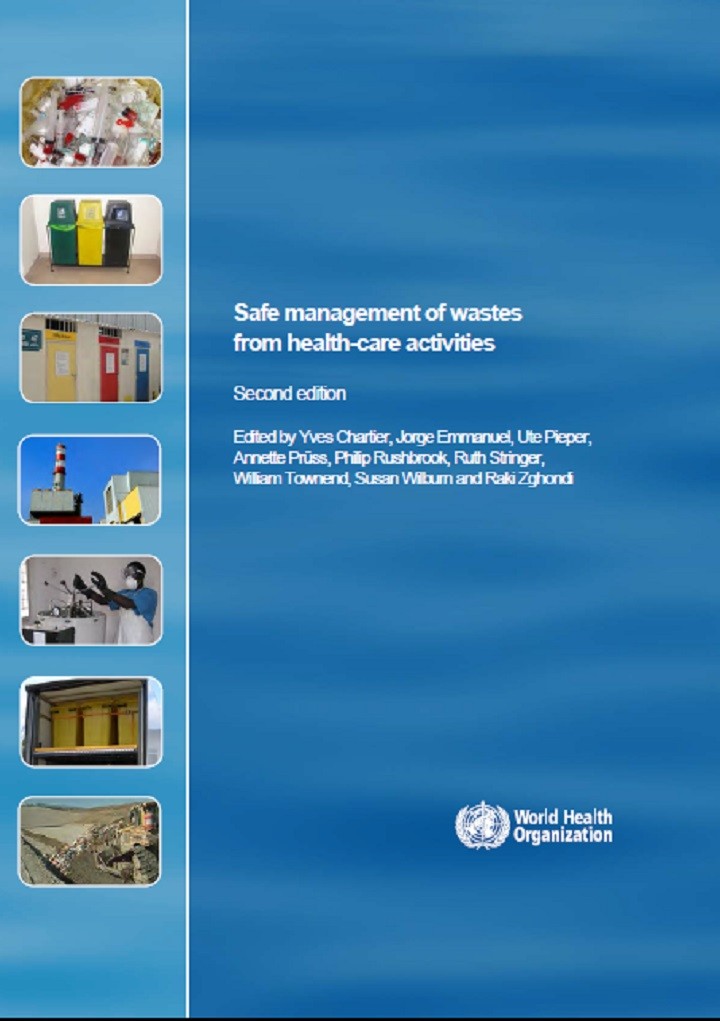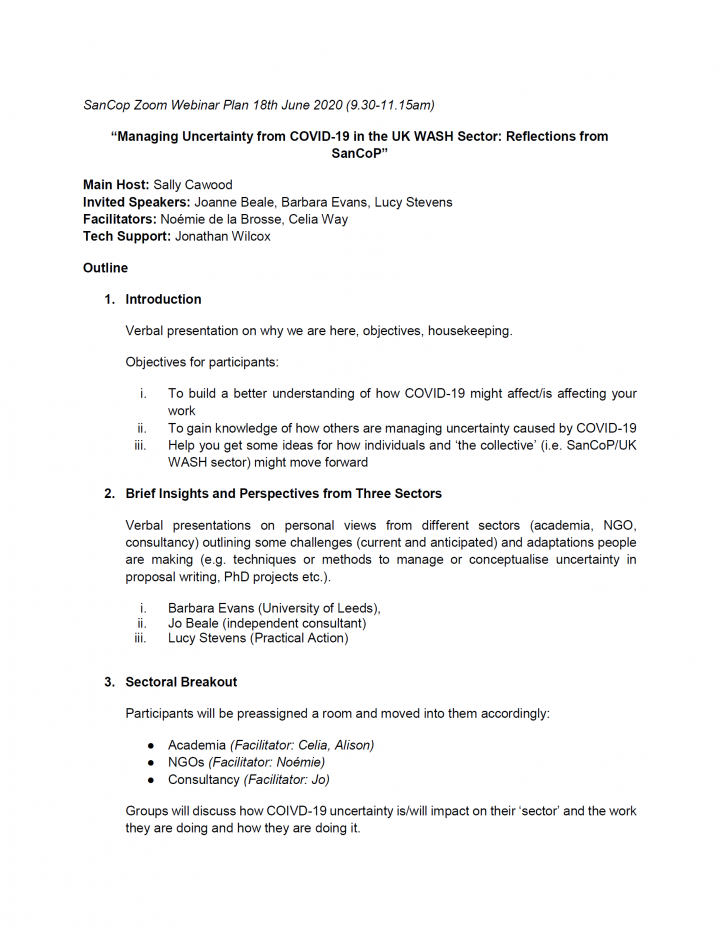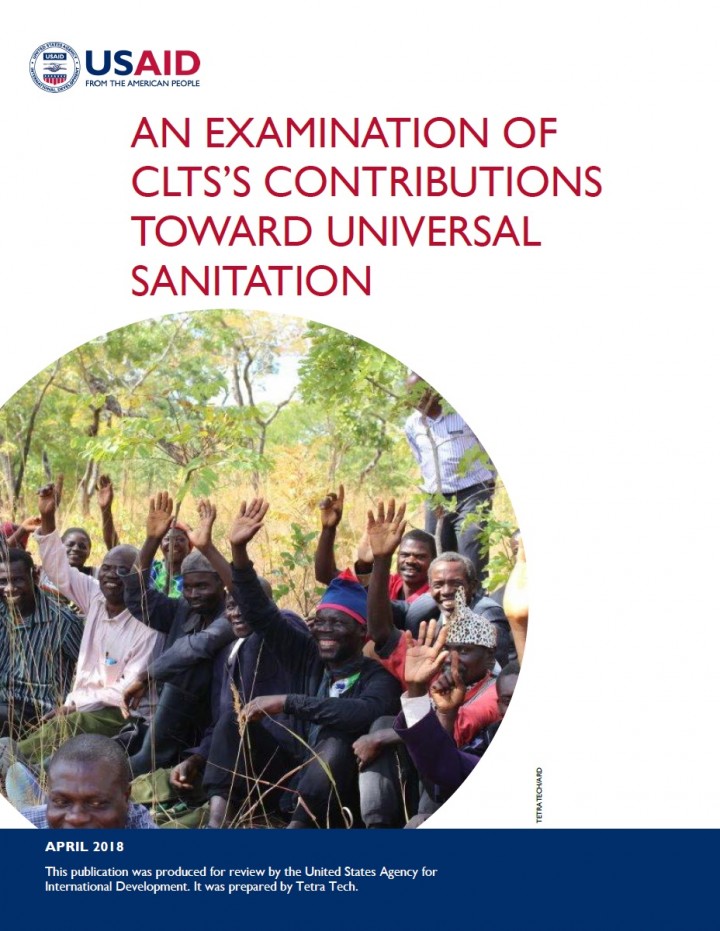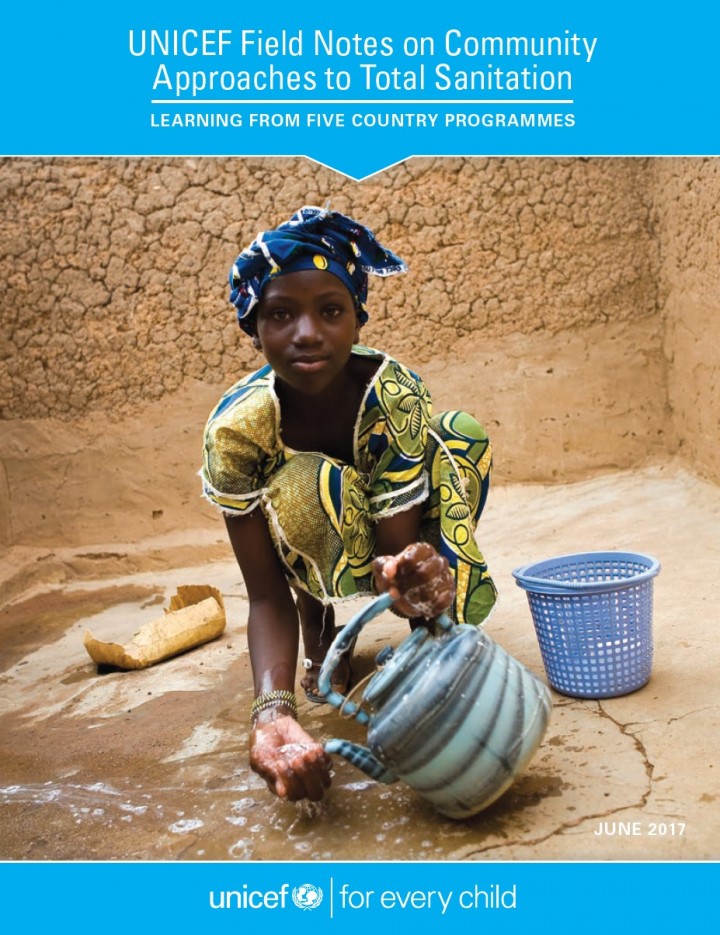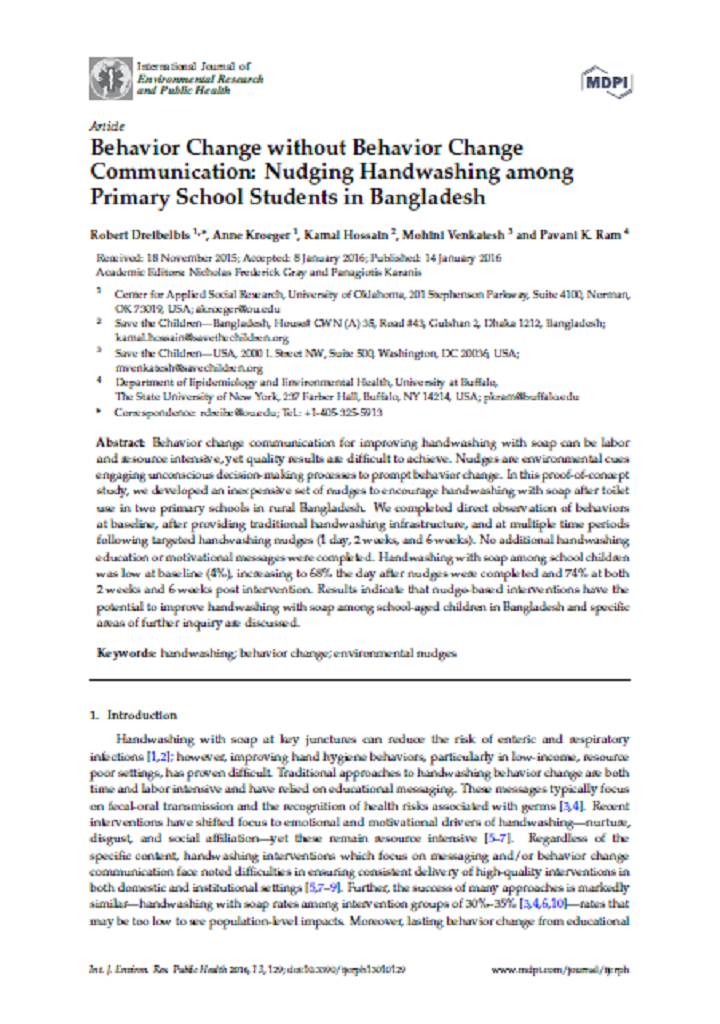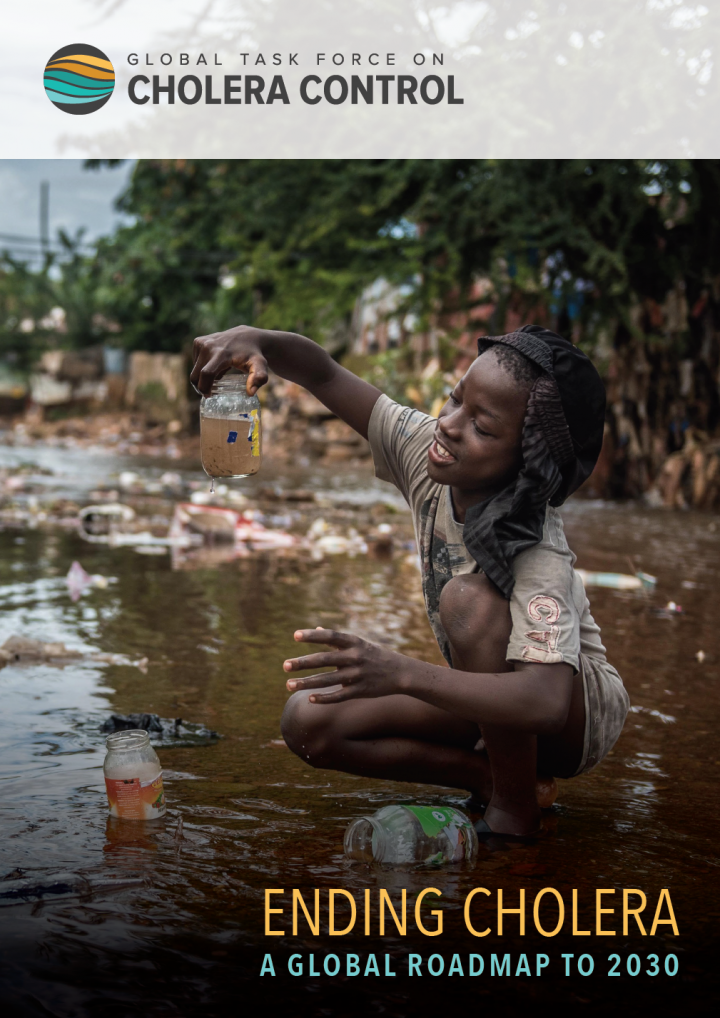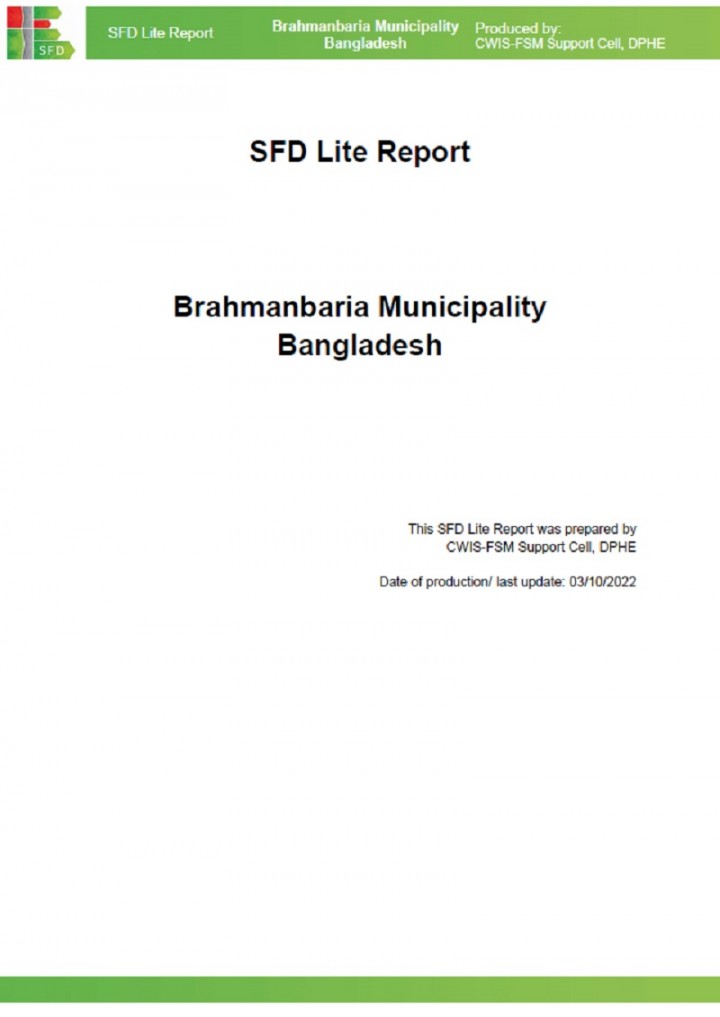Searching for information on Sanitation Workers?
The Sanitation Workers Knowledge + Learning Hub is the best source for all current news, trends, articles and updates on sanitation workers rights around the world.
A well-facilitated Community-Led Total Sanitation (CLTS) programme that pro-actively considers and involves people who might be disadvantaged has been shown to have many benefits. A lack of this can and will often have negative impacts and make programmes and ODF unsustainable. This issue of Frontiers of CLTS looks at who should be considered potentially disadvantaged, how they can effectively …
The Global WASH Cluster Annual Report for 2018 summarizes the most salient results achieved over the year, the key challenges faced in implementing the Global WASH Cluster (GWC) Strategic Plan and recommends activities to overcome the challenges. The 2018 Annual Report follows the model established in the 2017 Annual Report. The priority activities are identified and listed in line with the new …
This workshop provides an overview of the six components of a successful latrine program: stakeholder engagement, demand creation, products and services, finances, capacity development, and monitoring. After participating in this workshop, participants will be able to design or strengthen a latrine program for their context. They will have a greater awareness of factors influencing behaviour …
Many of the most common diseases found in traumatized communities after a disaster or emergency are related to drinking contaminated water. The contamination can be from micro-organisms (Table 1) or natural and man made chemicals (Table 2). This fact sheet concentrates on the problems caused by drinking water contaminated by micro-organisms as these are by far the most common and can be reduced …
In 2015, Container-Based Sanitation provider Sanergy was awarded a GSMA Mobile for Development (M4D) Utilities grant with SweetSense to install GSM and RFID enabled infrared sensors to record Fresh Life Toilet activity and estimate fill levels. Waste collectors and Fresh-Life Toilet Operators used the sensors to record servicing events and request assistance by swiping RFID tags. A mobile app was …
WEDC conference papers are an important source for learning about WASH innovations and lessons learned in the field and more than 150 papers were accepted for the 2018 WEDC conference.
Below are titles of the Emergency WASH papers (for the link see below):
- Designing evidence-based and context-specific hygiene programs in emergencies: could there be an app for that?
- Shedding light on …
Coral reefs have experienced a global decline due to overfishing, pollution, and warming oceans that are becoming increasingly acidic. To help halt and reverse this decline, interventions should be aimed at those threats reef experts and managers identify as most severe. The survey included responses from 170 managers, representing organizations from 50 countries and territories, and found that …
The waste produced in the course of health-care activities, from contaminated needles to radioactive isotopes, carries a greater potential for causing infection and injury than any other type of waste, and inadequate or inappropriate management is likely to have serious public health consequences and deleterious effects on the environment.
This handbook – the result of extensive international …
The WASHCost Project aims at improving sustainability, cost efficiency and equity of WASH service delivery in rural and peri-urban areas by identifying the factors influencing costs at each stage of WASH service delivery life cycle. In order to achieve the overall aim of WASHCost project, the methodologies designed for tracking inputs on WASH service delivery system are largely tested in test bed …
To commemorate World Toilet Day 2022, the SuSanA Working Group on productive sanitation and food security (WG5) and the Stockholm Environment Institute (SEI), along with partners, organised a webinar about the role of standards and certification systems in the safe reuse of nutrients from sanitation systems. Moderated by WG5 Lead Daniel Ddiba.
This entry is the collection point of the …
The COVID-19 pandemic put front and centre for the needed attention on water supply, hand hygiene and sanitation.
Using the Enabling Environment matrix like a camera lens to view national-level actions, the collective country examples from 20 countries in Africa, Asia and the Pacific supply rich learnings and underline the positive momentum showed by Ministries of Education to lead WinS, and …
This was an interventional study carried out over a period of 5 days among 21 schoolchildren aged 12–18 years in their respective school premises. Participants were requested to rub their hands with an UV-sensitive fluorescent lotion and then wash them. Hands were air-dried and examined under UV rays for blue light emission in a dark room. Emission of blue light highlighted parts of hand where …
Community-led Total Sanitation (CLTS) is a revolutionary idea and an inspiring practice. The enthusiasm of its many adherents in government and civil society is understandable. This desk review examines the refereed and gray literature on CLTS, with the central objective of assessing the knowledge base on best practices and identifying evidence gaps to inform the project’s research agenda (to …
Badimalika Municipality lies in Bajura District in Sudurpaschim Province of Nepal. It was established in March 2017 in accordance with the 2015 Nepali Constitution, as decided by the cabinet. It is formed by merging previously three Village Development Committees (VDCs) named Martadi, Budiganga and Jugada. There are nine political wards in the municipality.
Population of Municipality is …
Community Approaches to Total Sanitation (CATS) aim to achieve 100 per cent open defecation free (ODF) communities through affordable, appropriate technology and behaviour change. Some of the key principles guiding CATS are:
• An emphasis on the sustained use of sanitation facilities by every community member, rather than simply the construction of infrastructure.
• The safe disposal of …
Behavior change communication for improving handwashing with soap can be labor and resource intensive, yet quality results are difficult to achieve. Nudges are environmental cues engaging unconscious decision-making processes to prompt behavior change. In this proof-of-concept study, we developed an inexpensive set of nudges to encourage handwashing with soap after toilet use in two primary …
Ending Cholera—A Global Roadmap to 2030 operationalises the new global strategy for cholera control at the country level and provides a concrete path toward a world in which cholera is no longer a threat to public health. By implementing the strategy between now and 2030, the Global Task Force on Cholera Control (GTFCC) partners will support countries to reduce cholera deaths by 90 percent. …
The Regional Overview underlines the urgency to develop and implement strategies for sustainable management of water resources and to adapt to the climate change impact on water and agriculture. The report documents several positive experiences in sustainable management of water resources and climate change adaptation in the region. It highlights the importance of accelerating investments aimed …
In 2017, the Government of Pakistan rolled out Joint Sector Reviews (JSR) in four provinces in order to periodically assess the performance of the water, sanitation and hygiene (WASH) sector. UNICEF, the Government, development partners, and civil society participated in the process, using the WASH Bottleneck Analysis Tool (WASH-BAT) as a guiding framework. The WASH-BAT, which was designed by …
Brahmanbaria is a fast-growing city located along the Dhaka-Chittagong highway and 110 km Eastern of Dhaka. It is beside the Titas Rive rand well connected with road, water, and railways. It is one of the oldest towns in the sub-continent and was declared Municipality in 1868. Brahmanbaria is one of the 53 district level municipalities in the country.
According to the population census in 2011 …



